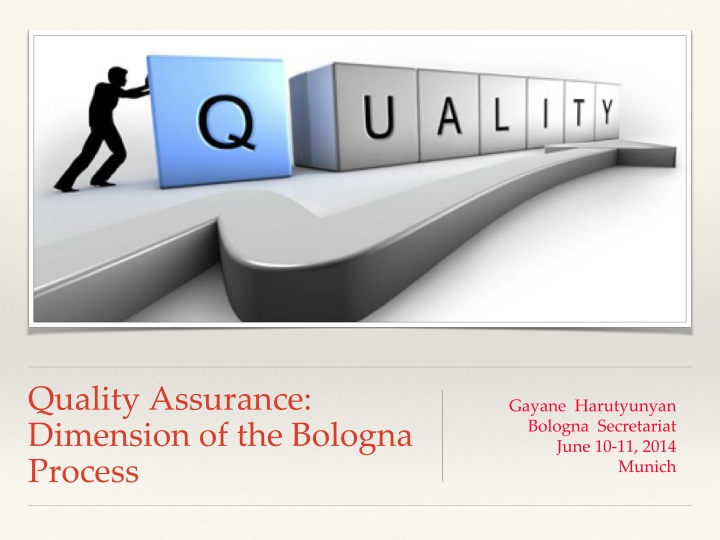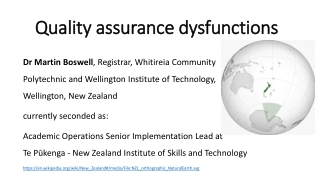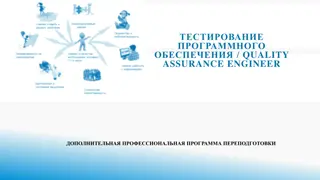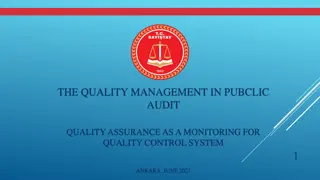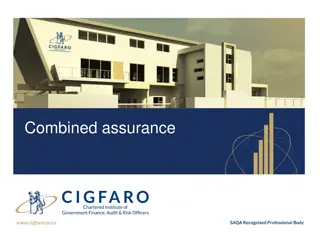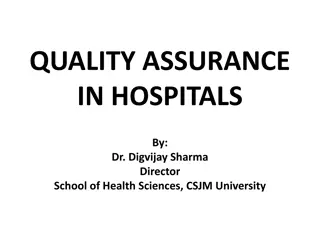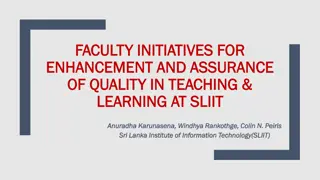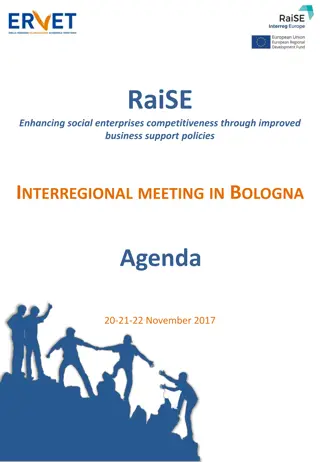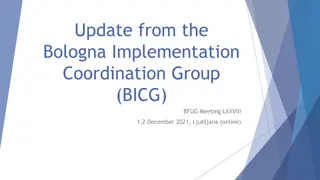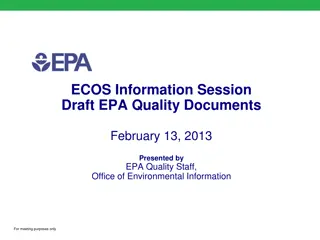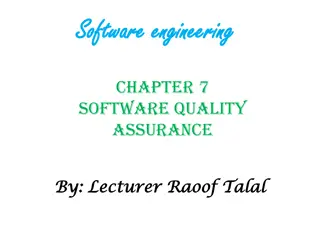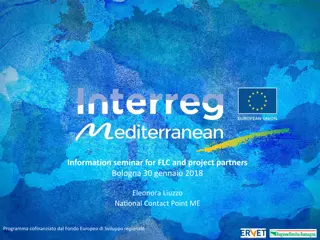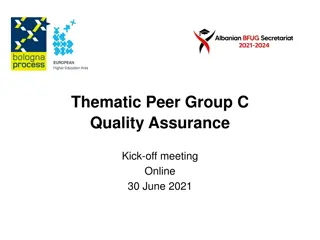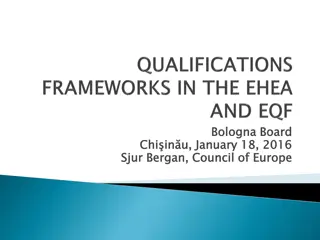Quality Assurance Dimension of the Bologna Process Overview
Explore the modern rationale and evolution of Quality Assurance (QA) in the Bologna Process, emphasizing the European Standards and Guidelines (ESG) developed to ensure quality in higher education. The Communique milestones and the primary principles of QA in the EHEA are highlighted, emphasizing the responsibility of HEIs and the importance of external assurance. The ESG comprising 23 standards for internal and external QA by both HEIs and agencies is also discussed.
Download Presentation

Please find below an Image/Link to download the presentation.
The content on the website is provided AS IS for your information and personal use only. It may not be sold, licensed, or shared on other websites without obtaining consent from the author.If you encounter any issues during the download, it is possible that the publisher has removed the file from their server.
You are allowed to download the files provided on this website for personal or commercial use, subject to the condition that they are used lawfully. All files are the property of their respective owners.
The content on the website is provided AS IS for your information and personal use only. It may not be sold, licensed, or shared on other websites without obtaining consent from the author.
E N D
Presentation Transcript
Quality Assurance: Dimension of the Bologna Process Gayane Harutyunyan Bologna Secretariat June 10-11, 2014 Munich
Modern rationale of QA - Shape factors emergence of markets and their increasing role as a regulatory tool for increasing the efficiency of public services including higher education globalisation and cosmopolitism emergence of private higher education massification and diversification of higher education institutional autonomy loss of trust in academics increased costs of higher education to public.
QA in the Bologna Process: Communiques 1999 Bologna: Promote cooperation in quality assurance with a view to developing comparable criteria and methodologies. 2001 Prague: ENQA was invited to establish a common framework for the European quality assurance in collaboration with HEIs and QA agencies. 2003 Berlin: Development of quality assurance standards and procedures at institutional, national and European level : QA systems should include a system of accreditation, certification or comparable procedures; it is primary responsibility of HEIs. 2005 Bergen: European Standards and Guidelines for quality assurance adopted. 2007 London: Creation of the European Quality Assurance Register (EQAR). . Quality assurance - an overarching focus for the European Higher Education, seen as essential for building trust and transparency as well as reinforcement of the attractiveness of the EHEA.
European Standards and Guidelines(ESG) for QA Developed by E4 Group: ENQA, ESU, EUA and EURASHE were endorsed by the ministers in 2005. Single and Strategic approach Fundamental principles HEIs have primary responsibility for quality of their provision and its assurance interest of students as well as employers and society more generally good quality HE institutional autonomy the need external quality assurance to be fit purpose Rationale: Generic principles rather than procedures Applicable to all EHEA diversity of HEIs and QAA( irrespective their structure, size, function and national system that they operate) Reference points rather than detailed standards, HEIs decide on procedural consequences of adopting Peer review system based on good practice Avoid using standards and guidelines as a checklist
ESG (II) ESG comprises of 23 standards : Part 1. Internal QA by HEIs - 7 standards Part 2. External QA for HEIs - 8 standards Part 3. External QA agencies - 8 standards
Internal QA External QA 1. Use of internal quality assurance procedures 1. Policy and procedure for quality assurance 2. Approval, monitoring and periodic review of programs and awards 2. Development of external process 3. Assessment of students 3. Criteria for decisions 4. QA of teaching staff 4. Process fit for purpose 5. Learning resources and student support 5. Reporting 6. Information systems 6. Follow-up procedure 7. Periodic reviews 7. Public information 8. System-wide analyses
QA within EHEA Internal QA taking place within HEI different extents of formality various motivation: quality improvement, accountability, external forces, different development stages
Building institutional internal QA Comprehensively defined aims and targets Broad consensus on internal QA system: academic and non-academic staff, students Ownership of the internal QA system It will not happen in on day.
Elements of internal QA Student questionnaires courses entire programs also: alumni, teaching staff Approval and review of programs regular evaluation of study programs review team comprising from staff and students possible external elements improvements and follow-up.
Sample: Phases of Accreditation Institutional self-assessment report -evaluation of activities against SG for the last 5 years either for institutional or program accreditation Desk review- expert panel checks fulfilment of standards. Site visit- meetings at all levels Report prepared by the QA agency- findings, considerations, recommendations Decision making- conditionally accreditation, accreditation, rejection
Quality is a concept. It is a philosophy, it is a journey, it is also what we practice .
